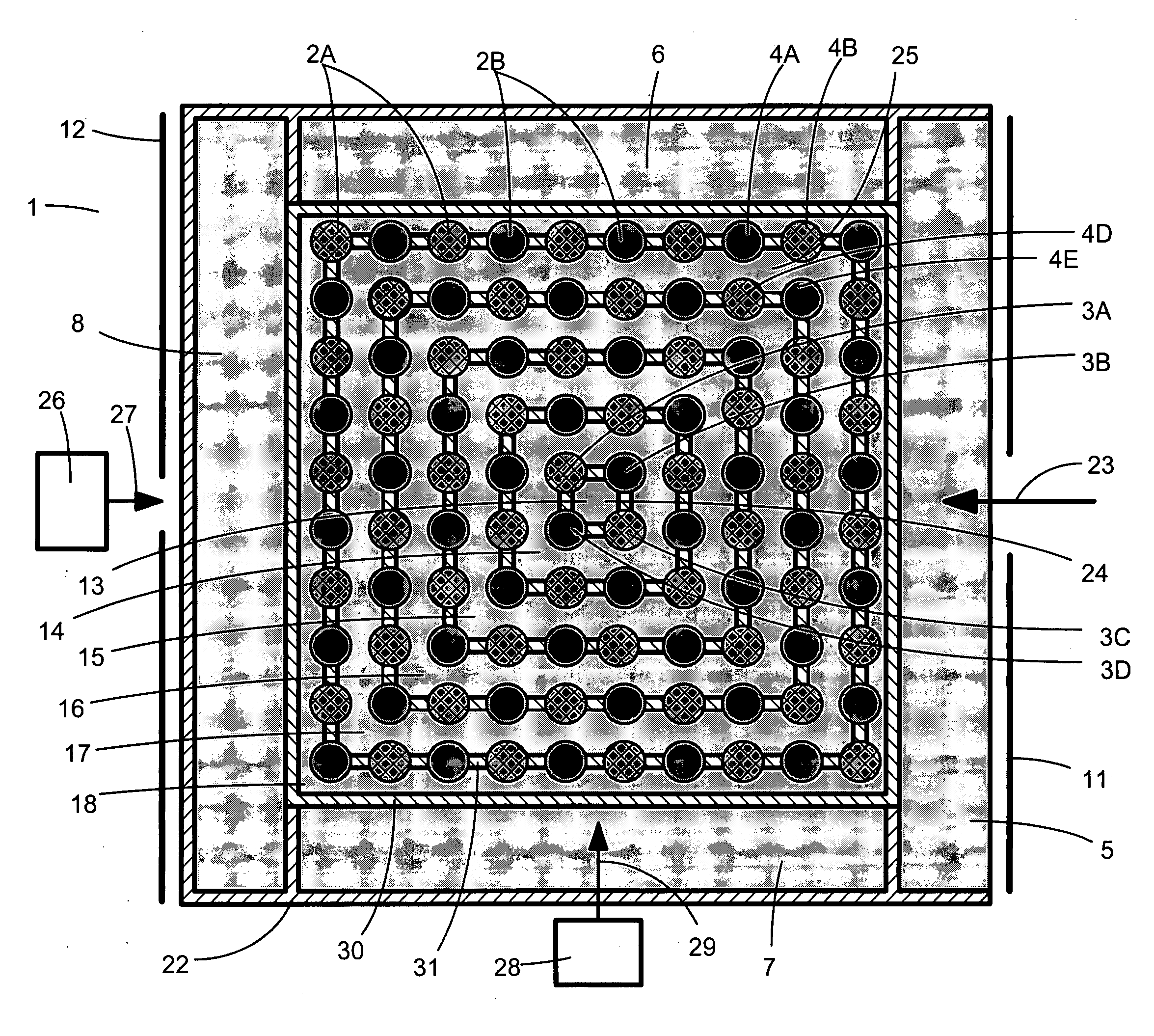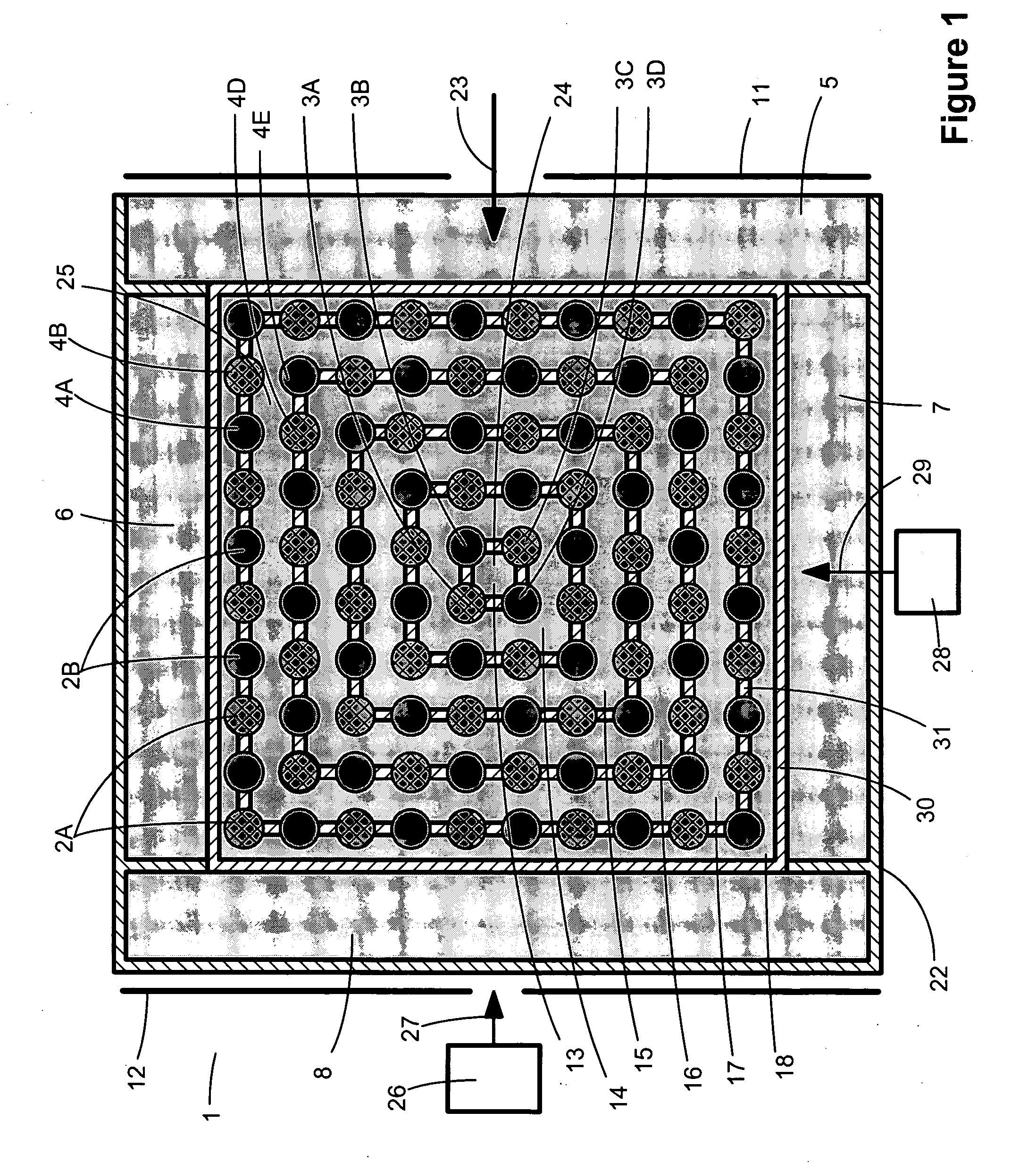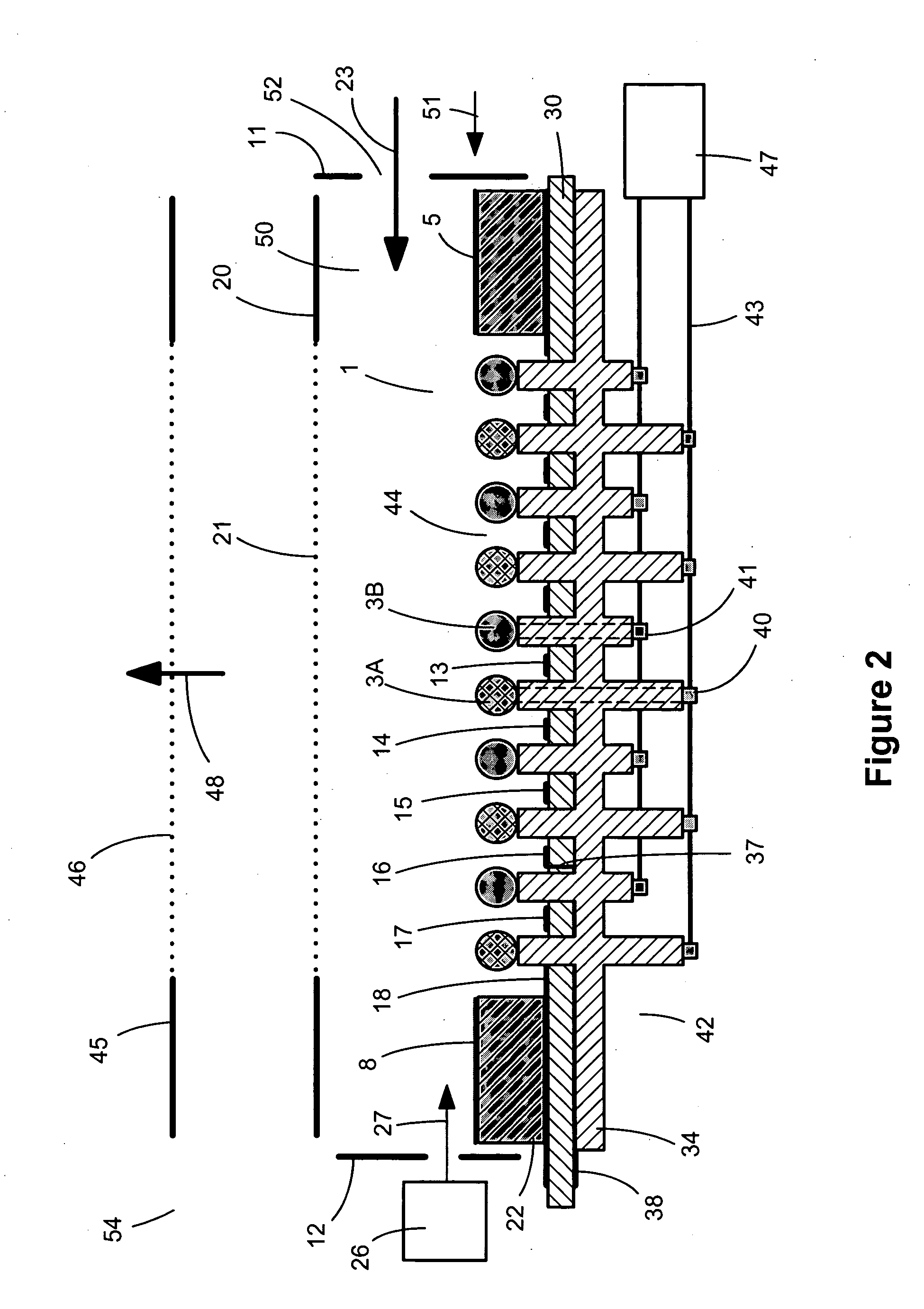However, there is often a trade-off between sensitivity and resolving power, for example, when portions of the angular and / or spatial distributions of the sampled ion
population must be sacrificed in order to achieve high resolving power.
Typically, a relatively small portion of the sample ion
population from a continuous
ion beam may be analyzed at a time, resulting in relatively low
duty cycle efficiency.
However, the continuous transfer of externally-generated ions into such a three-dimensional RF-
quadrupole ion trap is problematic because ions with energies low enough to be trapped will only be able to overcome the RF fields and enter the trap during a relatively
short segment of the RF
cycle time, resulting in a relatively low
duty cycle.
Another
disadvantage is that such an
electrode geometry produces pulsed TOF acceleration fields that are generally not optimum for achieving maximum TOF mass resolving power.
Relatively poor performance resulted from difficulties in efficient
trapping of ions due to the non-ideal
trapping fields, as well as from scattering of ions by the sample gas and by the gas introduced to collisionally cool the ions in the trap, which degrades TOF mass resolution and sensitivity.
Disadvantages of this approach, as well as that of Enke, et al., include: 1) sample gas is introduced directly into the TOF
optics, degrading the vacuum and causing ion scattering; 2)
electron impact ionization results in substantial fragmentation which renders this
ionization method impractical for
mass analysis of many types of samples, such as large biomolecules; and 3) the sample needs to be introduced into the TOF as a gas, which makes this approach incompatible with non-volatile samples; and 4) the ionization efficiency is relatively small given the poor overlap between the neutral sample molecules and the
electron beam.
However, the inventions disclosed by Whitehouse '301 and '941 require that the RF fields generated by an RF surface be sufficiently intense that ions are not able to come close enough to the RF surface to be trapped in the local potential wells between the RF electrodes.
While such configurations lead to improved TOF performance, nevertheless, the relatively poor localization of trapped ions parallel to the RF surface precludes additional possible improvements and functionalities.
For example, fragmentation of trapped ions by
photon-induced dissociation via a focused,
pulsed laser beam is relatively inefficient because the
laser beam pulse is able to intersect only a small fraction of the trapped ion
population with each pulse.
Further, any interaction between trapped ions and other
reagent species, such as
electron transfer dissociation (ETD) ions, is relatively inefficient without better
spatial localization of the reactant species.
Even further, any opportunity to manipulate the
spatial distribution of trapped ions is severaly limited, such as the ability to control the separation of the trapped ion population into sub-populations which are then directed to different TOF detectors, thereby providing better
dynamic range, as described by Whitehouse, et al., in U.S. Application Publication No. 20020175292.
A major challenge with such interfaces is to direct as many of the ions produced at
atmospheric pressure through one or more small orifices comprising the API interface.
The opposing requirements of high electric fields for ion focusing, and low electric fields for ion transport driven by
gas dynamics, has resulted in inefficient transport of ions produced at or near
atmospheric pressure into vacuum.
Another challenge has been to transport ions efficiently through multiple
vacuum pumping stages.
Nevertheless, there remain compromises in these configurations between maximizing ion transport efficiency and minimizing gas flow between
vacuum pumping stages.
 Login to View More
Login to View More  Login to View More
Login to View More 


